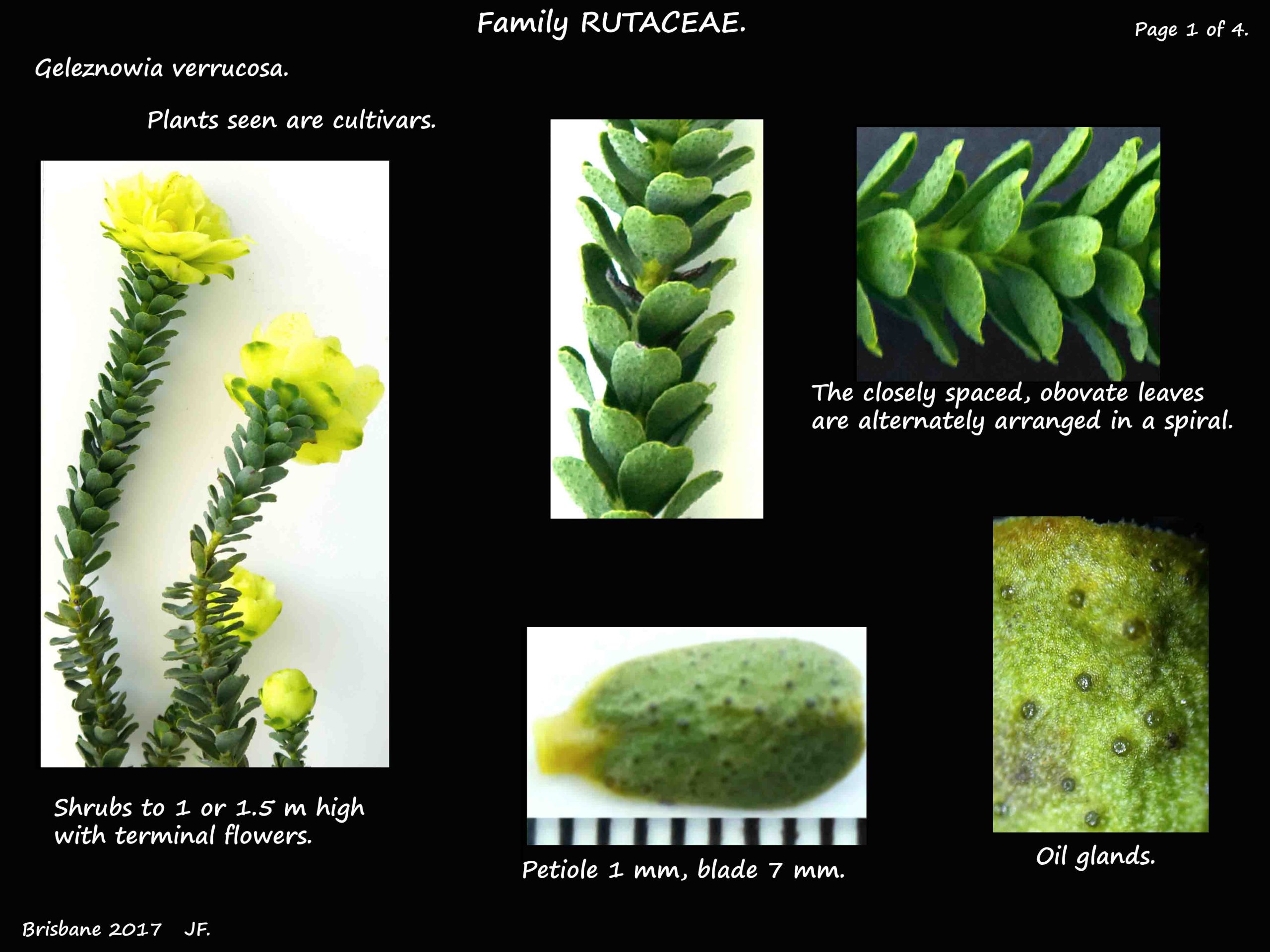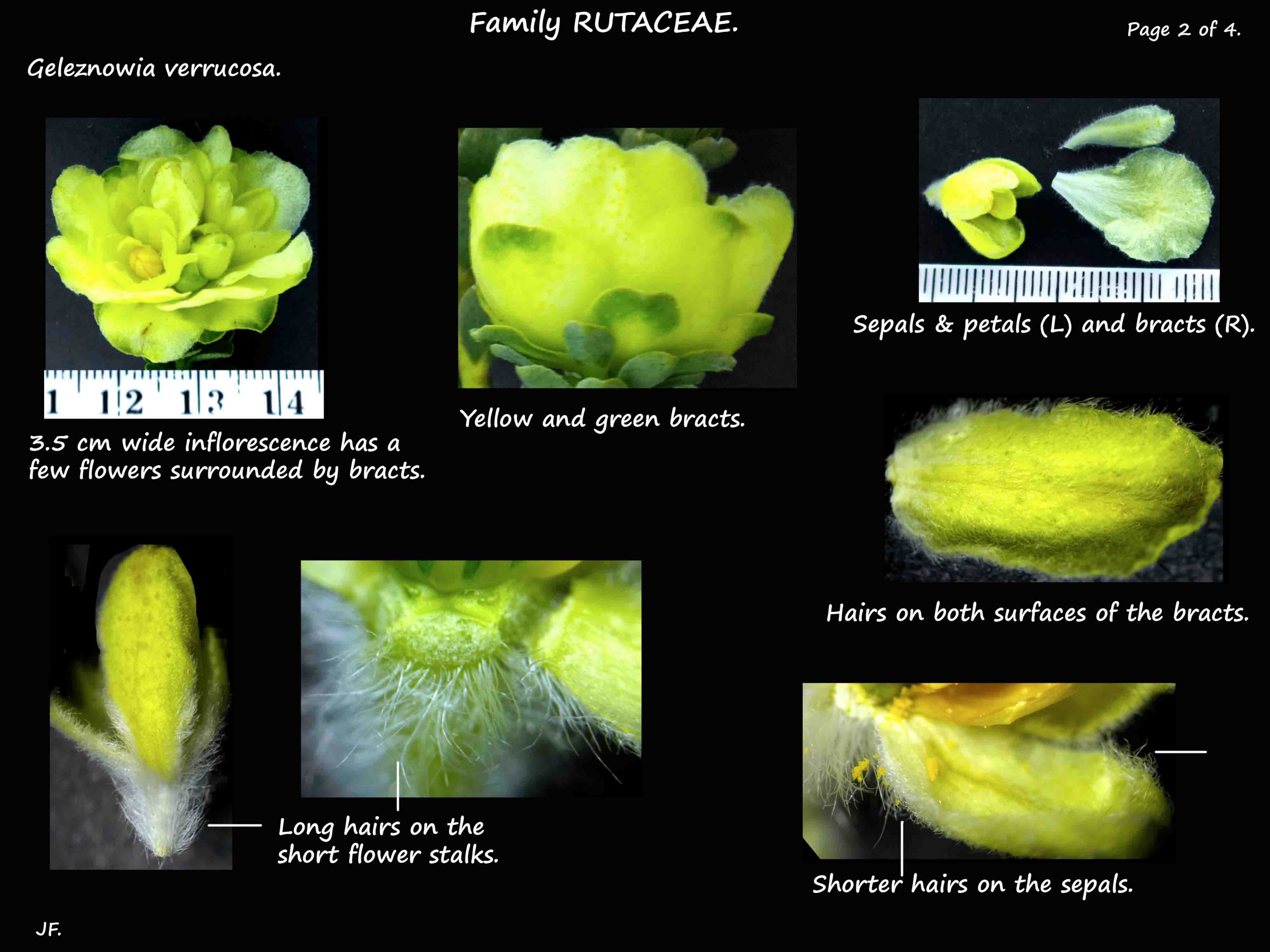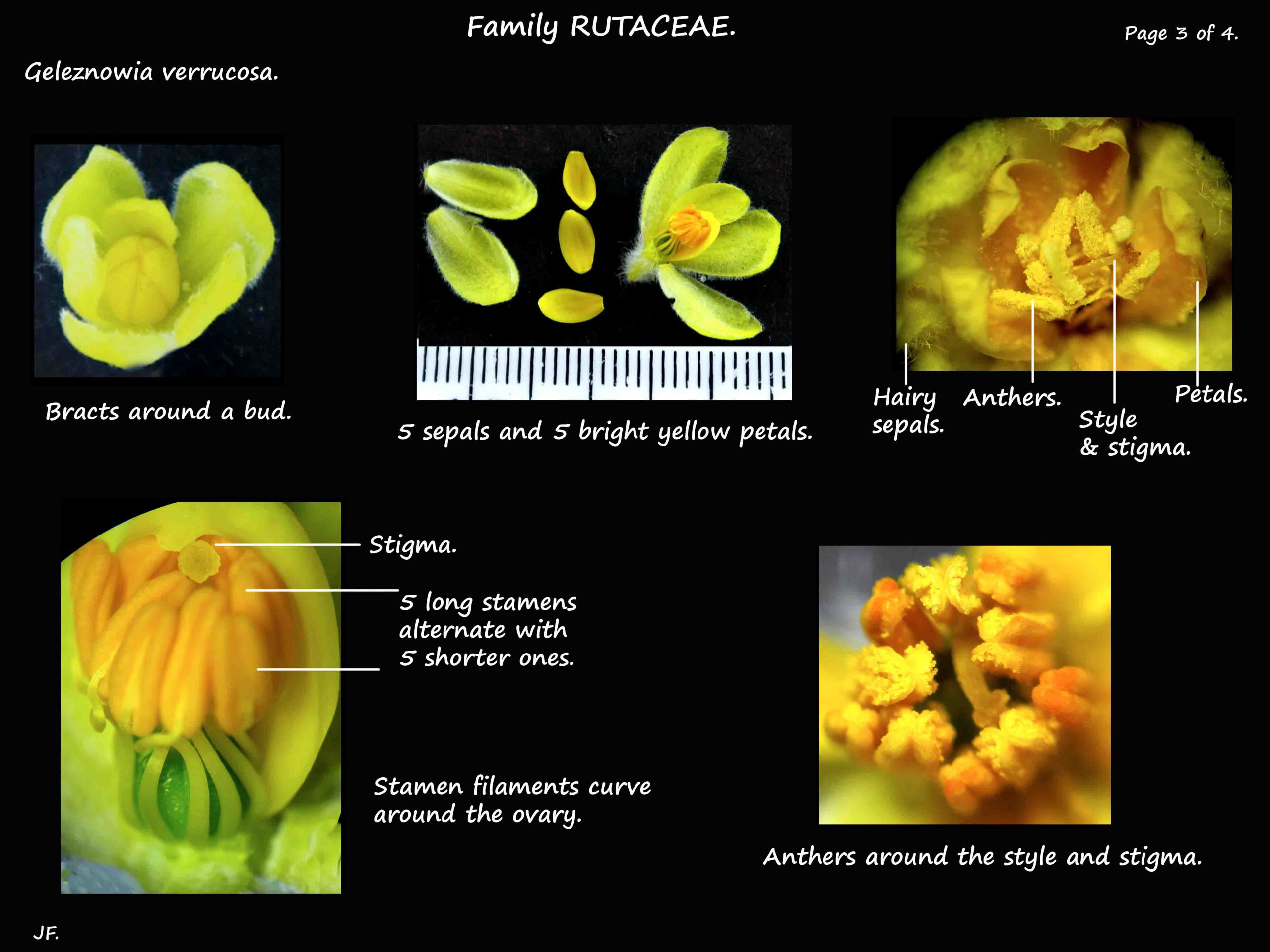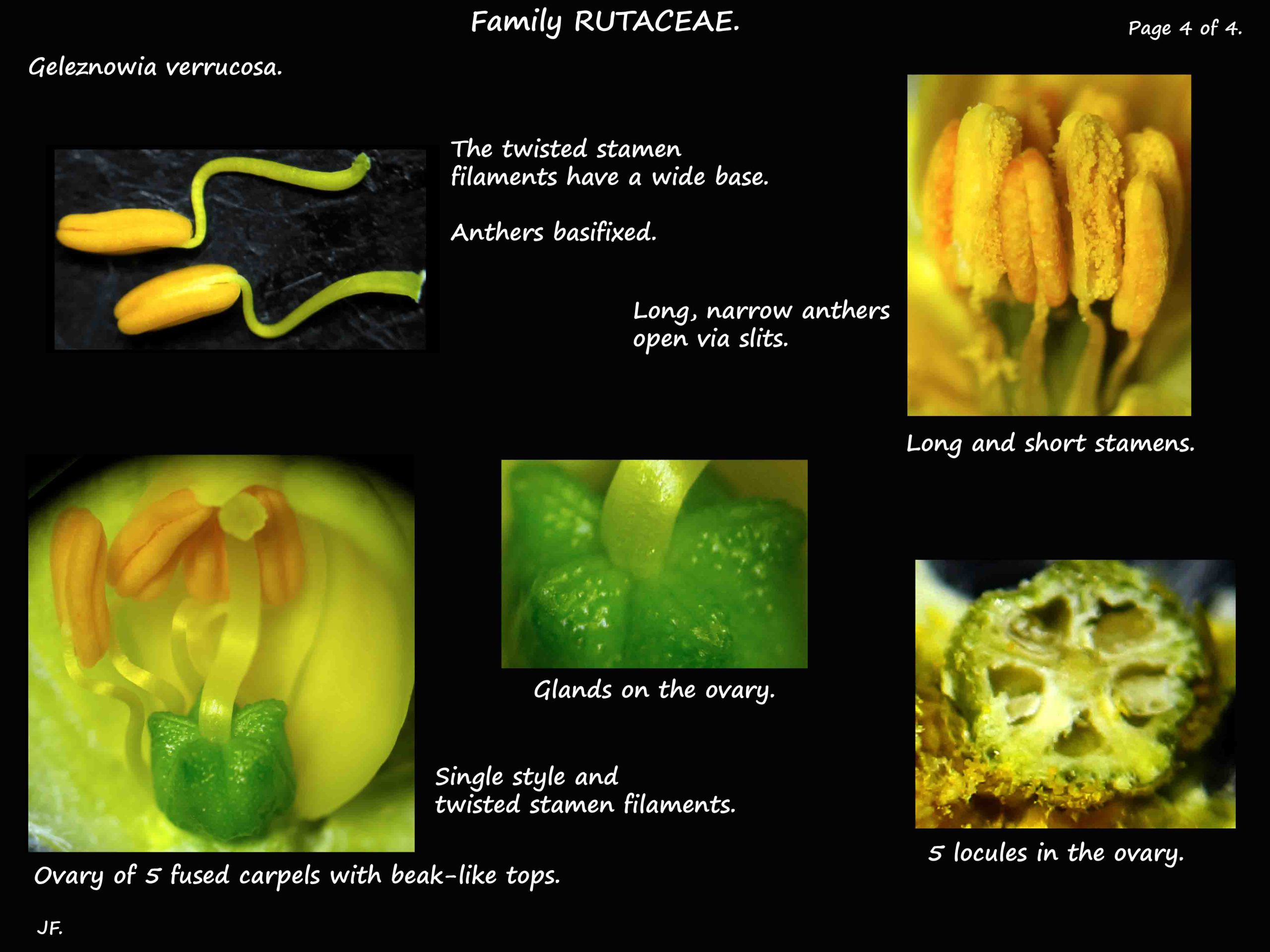Geleznowia verrucosa & cultivars.
Family Rutaceae.
Yellow Bells, the only species in the genus, is native to Western Australia.
They are commercially grown for the cut flower trade.
Plants taken from different areas exhibit slightly different features and these have been used in creating hybrids and cultivars.
They are evergreen shrubs from 0.5 to 1.5 m high.
There is a prostrate form growing to 10 cm high.
The close set leaves are spirally arranged along the stem.
The dull, silvery or grey-green leaves are ovate or obovate and around 1.2 cm long.
The thickish leaves have prominent oil glands.
Inflorescences, up to around 3 cm across, are at the tips of the stems.
They consist of clusters of up to 15 flowers.
The flowers are surrounded by large, yellow or yellow and green bracts.
The bracts have glands and simple hairs.
The bracts, which may darken with age, remain after the sepals fall.
The flowers are 1 to 2 cm across with parts in 5’s.
There are dense, long white hairs on the flower stems.
There are shorter hairs on the sepals.
The buds are typically yellow but there is a form with pink buds.
The petals are a bright or deep yellow.
In one form they develop a red tinge after pollination.
There are 10 stamens with 5 slightly longer than the others.
The yellow filaments, with wide bases, curve around the ovary.
The long yellow anthers are basifixed and open via long slits.
There are 5 bright green, fused carpels with curved, beak-like tops.
There are glands on the surface.
The single yellow style sits in a slight depression.
There is a small, globular stigma.
The anthers and stigma do not extend beyond the petals.
J.F.





